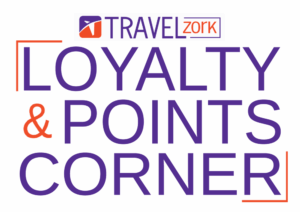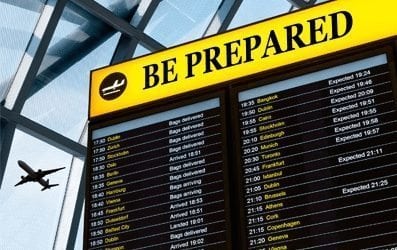
In the first article in this series, I covered some currency-related issues addressed in the “General Information about X” (where “X” is the country/ies I will be visiting) document I prepare for every trip outside the U.S. including:
- Best options for obtaining local currency on arrival,
- Idiosyncrasies of local ATMs.
- Currency-related scams about which to be aware,
- Converting back to one’s home currency when one’s trip has ended, etc.
In this article, I will address the instruments which are likely to be used for most of one’s travel spending and how to protect them.
Credit/Debit Cards
It’s a “Captain Obvious” type of observation but one should begin (re)building one’s balance of points/miles for future adventures by using credit cards for as much as possible of the spending one invariably does while traveling. In addition to the convenience they offer, some credit cards provide travel insurance alternatives, purchase protection and even primary rental car insurance. That said, not all credit cards are created equal; it’s important to consider the strong and weak points of each.
Deciding Which Card(s) To Carry
First, “when in Rome…” you will want to use only credit cards that do not charge foreign transaction fees. Fortunately, there are plenty of these; just make sure the one you’re carrying is among them. Given the demise of the pure “mileage run” (it can still make sense to “status run” under the right conditions – a topic for another post) and the inevitability of award chart devaluations, my preference is to accumulate flexible points rather than airline-specific miles so I can transfer points strategically when the opportunity/need arises. There are four (4) primary programs occupying this space: Chase’s Ultimate Rewards, American Express Membership Rewards, Citibank’s Thank You Points and Starwood Preferred Guest’s Starpoints. There are other, niche programs like U.S. Bank’s FlexPerks (which is running an attractive Olympic-themed promotion until September 3 whereby one can pick up a quick $600 worth of travel by meeting the $2,000 minimum spend requirement) but Chase, AmEx, Citibank and SPG are the major players. Of these, my favorites are Ultimate Rewards and Starpoints for the reasons summarized below; your preferences may vary.
Credit Cards/Reward Programs
1. Ultimate Rewards
It is easy to earn Ultimate Rewards points…and it just became easier (for some) with the official launch of the Chase Sapphire Reserve card which one-ups the ever-popular Chase Sapphire Preferred thanks to its 100,000-point sign-up bonus and best-in-class earning on travel-related spending (3x on travel and dining), among other attractive features. Ultimate Rewards, once earned, transfer quickly (in many cases, instantly) to 7 airlines in all 3 major alliances as well as 4 hotel programs. Additionally, neither the Chase Sapphire Preferred nor the Chase Sapphire Reserve have foreign transaction fees while the Chase Freedom has attractive and potentially lucrative rotating quarterly bonus categories. I have the Chase Sapphire Reserve, the Chase Sapphire Preferred (which I will jettison when its annual fee comes due) and the Chase Freedom cards in my wallet.
2. Starpoints
I tend to use my Starwood Preferred Guest Credit Card from American Express for any foreign spending I can that isn’t eligible for category bonuses. One can transfer Starpoints into a slew of airline programs at a 1:1 rate (1 Starpoint = 1 airline mile) including Alaska, American and Delta domestically. One can also transfer to United’s Mileage Plus program but at a far less attractive 2:1 rate; not recommended. But as long as you transfer 20,000 Starpoints at a time, you get an automatic 25% bonus (optimized by making three 20,000 point transfers/day for a possible 75,000 miles/day). If airline transfers are your objective and especially if you want to transfer to an airline program that’s not a partner with Ultimate Rewards, Membership Rewards or Thank You points, that’s like earning 1.25 miles for every $1 spent! Transfers, however, can take some time, so do your research and plan ahead! (Also see : Starwood Preferred Guest Business Credit Card from American Express.)
Debit Cards
ATMs are my “go-to” source of local currency abroad. But, whatever you do, never use a credit card to withdraw cash from an ATM – such transactions are treated as a “cash advance” and are among the most expensive things you can do with a credit card! Your bank may begin charging interest on the funds you withdraw from the date of the transaction – OUCH! Always use the right debit card. The two primary considerations when using debit cards for foreign ATM withdrawals are network and fees.
There are three widely available ATM networks: PLUS (associated with Visa), Cirrus and Maestro (associated with MasterCard). I always try to carry a no-fee Visa and a no-fee MasterCard debit card with me when I travel. There are online locators (as well as apps for your smartphone) to help you quickly and easily find an ATM wherever your travels take you:
MasterCard/Cirrus/Maestro ATM locator
As far as fees go, the Charles Schwab debit card has no ATM fees worldwide while the Chase Private Client debit card (both Visa-branded) rebates non-Chase ATM fees up to 5x/statement period. Additionally, my community bank doesn’t charge a fee for ATM withdrawals using the MasterCard-branded debit card linked to my checking account.
Protecting The Plastic You Are Carrying
Once I’ve decided which cards I will be taking with me, I turn my attention to protecting those cards against the perils of travel; e.g., getting “frozen” for suspicious activity, loss, getting “eaten” by a hungry ATM, scams, etc.
Notify Your Banks
These days, many banks make it possible to activate travel notifications online. After logging into each account, navigate to “Manage my account” (or something similar) and see if you have this option. If not, simply call the customer service number on the back of your card and ask the customer service agent to note your travel dates and destinations on your account.
Make Copies
Some folks make color copies of both sides of each card they are carrying and keep it in the most secure place they have available – separate from the wallet/clutch where the cards are held (e.g., in a money belt). I prefer to take pictures of the front and back of each card with my smartphone and upload it to a password-protected cloud photo repository (e.g., Google Photos, Dropbox, etc.)
Include Modified Numbers In Your “General Information For X” Document
I also use a “system” to modify the last 11 (American Express) or 12 (all other banks) account numbers, expiration dates and security numbers which I list in my “General Information for X” document. For example, a credit card with 4147-0002-6543-9180 might be listed as 4147-1113-7654-0291 (adding “1” to each value in the 12 trailing digits. An expiration date of 2/17 might become 4/19 (adding “2” to the month and the year). And a security code of 041 might become 140 (reversing it). This way I can carry a printed backup to the photos I’ve uploaded to the cloud and feel reasonably secure should my “General Information for X” document fall into the wrong hands.
List Toll-Free Customer Service Numbers
Finally, I list both the domestic (since my travel invariably originates in the U.S. and often includes transiting through a second domestic airport) and international customer service numbers found on the back of each card I will be carrying. I also list the country-specific toll-free numbers for each card I decide to take with me on my trip. The links below will take the reader to each bank’s list of in-country toll-free numbers:
Visa In-country Toll-free Numbers
MasterCard In-country Toll-free Numbers
American Express In-country Toll-free Numbers
So, in the end, each credit/debit card I decide to carry with me on international travel is listed in my “Travel Information for X” (“X” in this example is Belgium) document as follows:
Type: Credit
Issuing bank: Chase
Card name: Sapphire Preferred
Number (modified): 4147-1113-7654-0291
Expiration (modified): 4/19
Security code (modified): 140
Domestic toll-free number: 0800-1-8397
International toll-free number: (800) 493-3319
In-country toll-free number: 1.614.776.7050
Next in Be Prepared – Part 3: “Tipping”
More travel advice:
Manufactured Spend | Travel Money Without Spending A Dime
Travel Hacks | “Earn and Burn” – The Travel Hackers’ Credo
Book Review | World Travel Guide For Gamblers
I organize things; it's what I do! I enjoy the natural adrenaline high of travel as much as the next person but I also try to limit the likelihood that the surprises I experience along the way will be unpleasant ones. To this end, I spend more hours than most preparing for each trip. Fortunately for me, I enjoy the anticipation of travel as much as the experience of it. A primary objective of my blog contributions will be to share with my readers the "systems" and approaches I have developed over the years that have allowed my bride of 34 years and me to cross off a majority of our bucket list items. I've been a minister, nonprofit agency executive, professor and consultant. My "job" in retirement is planning our next trip.












